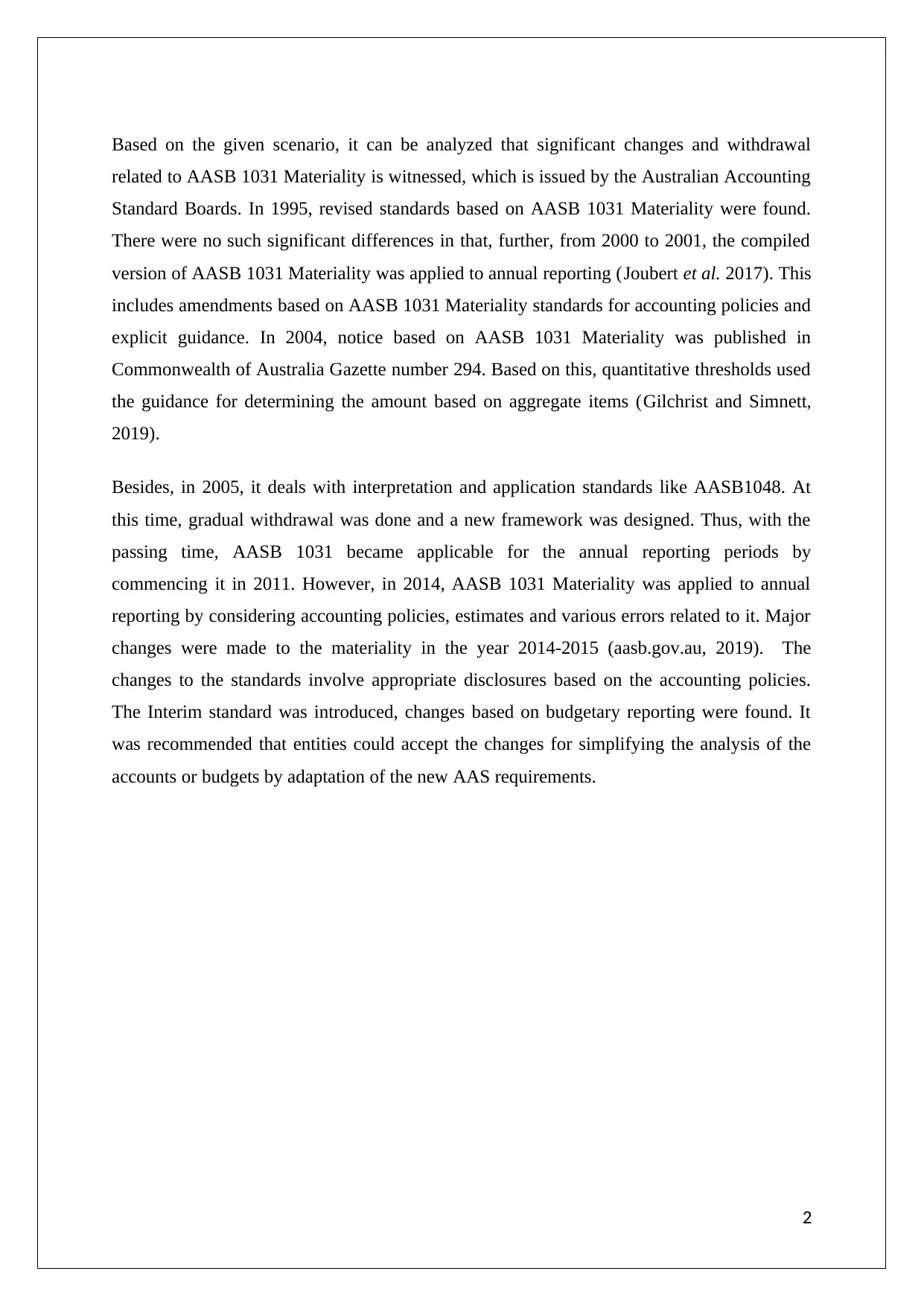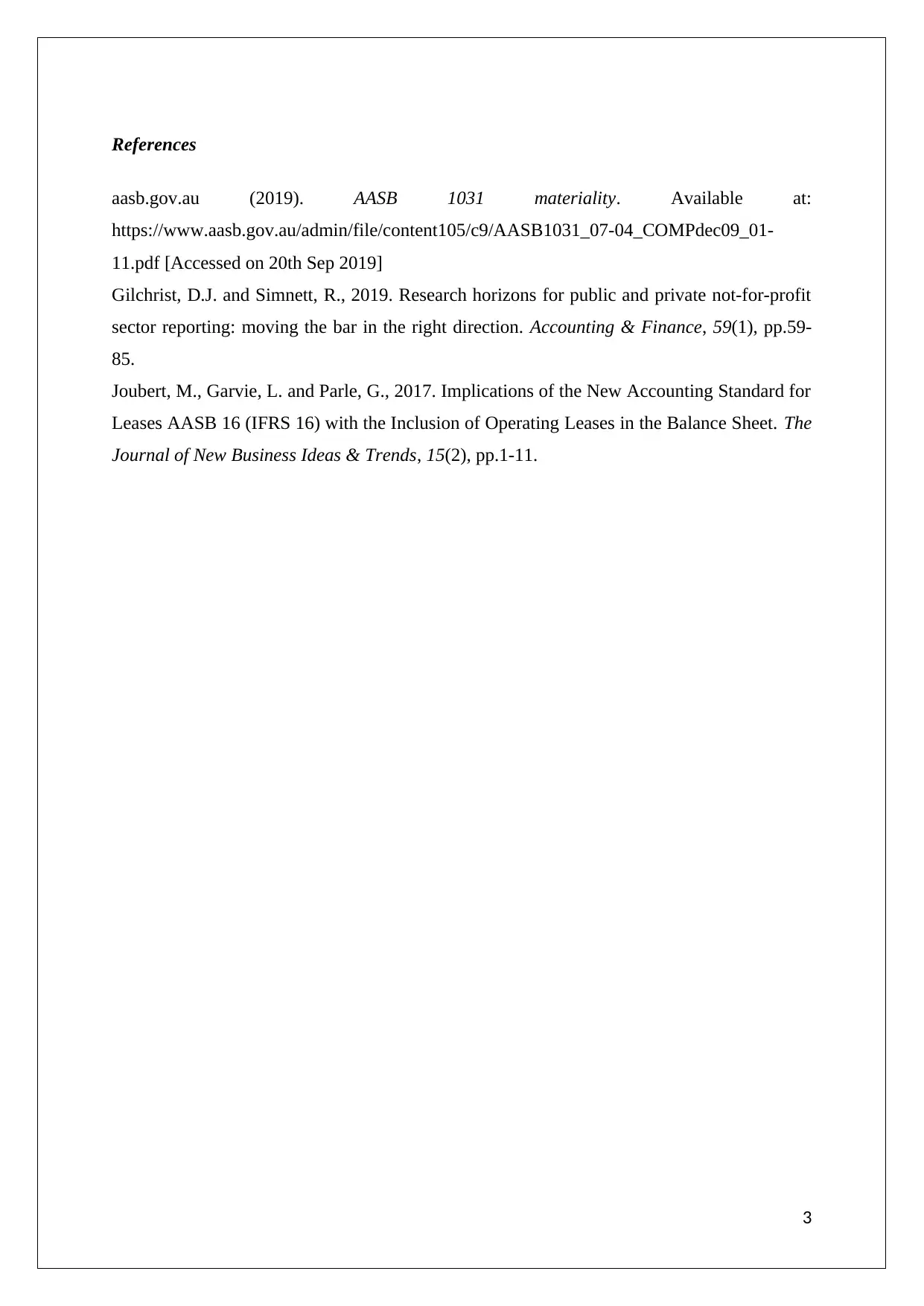Analysis of Significant Changes in AASB 1031 Materiality (1995-2015)
VerifiedAdded on 2022/10/10
|3
|416
|52
Report
AI Summary
This report provides a comprehensive overview of the significant changes to AASB 1031 Materiality, issued by the Australian Accounting Standards Boards (AASB), from 1995 to 2015. The analysis begins with the revised standards in 1995 and traces the evolution through the application of the compiled version in 2000-2001, which included amendments for accounting policies. It then examines the publication of notices in 2004, focusing on quantitative thresholds. The report further explores the gradual withdrawal and framework design in 2005, leading to the standard's applicability for annual reporting starting in 2011. The changes made in 2014-2015, including appropriate disclosures, introduction of interim standards, and changes to budgetary reporting are discussed. The report concludes by addressing the AASB's proposal to withdraw AASB 1031 in February 2012 due to reasons such as no international equivalent, gradual withdrawal of Australian guidance, and updated guidance on materiality in the IASB Conceptual Framework, with the withdrawal becoming effective from July 1, 2015. The report highlights the removal of specific quantitative guidance for materiality as a major impact of the withdrawal.
1 out of 3









![[object Object]](/_next/static/media/star-bottom.7253800d.svg)